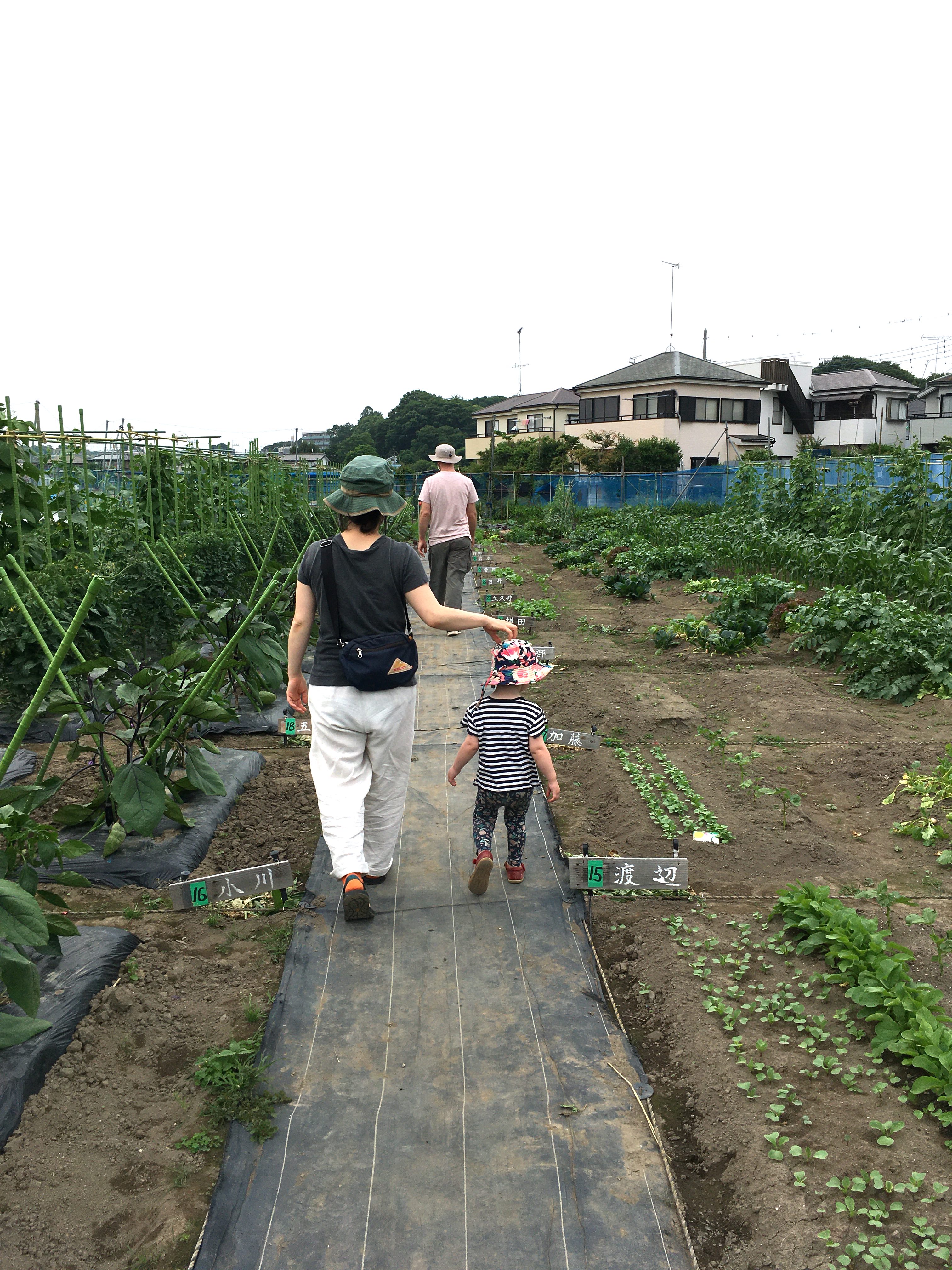Here’s How To Join A Community Garden In Tokyo
The Best Way To Grow Vegetables If You Live In An Apartment
Save money and reduce stress by renting a garden plot in Tokyo. Sit with us and learn how to find one near you and what to expect.
Since moving to Tokyo last year, I have missed growing vegetables, a hobby I used to love. Living on the 3rd floor in a small apartment means I can have a couple of pots of herbs on my balcony, but no space for a proper vegetable garden. That all changed earlier this year, when some friends invited me to join them in renting a plot in a community garden nearby!
I love gardening because it helps me to connect with nature, release stress and learn some practical skills. And I love the pleasure of eating freshly picked food. The veggies I grow are so much tastier and crisper compared to the ones that I buy in the supermarket.
I love gardening because it helps me to connect with nature, release stress and learn some practical skills
As climate change continues to alter our world, there has been a resurgence of interest in urban gardening. It’s one way to be a little more self-sufficient, and to learn skills that previous generations took for granted. Community gardens, also known as allotments, are a great option for people who don’t have space to grow food at their own house.
How my community garden works
The community garden I’m involved in is located on a small, privately-owned farm in Kunitachi, western Tokyo. The farmer who owns it has divided the farm into about 40 separate lots.
My family shares a plot with two other families. Sharing a plot is great because we split up the workload, which means that I can take a few days off if I need to! Even more importantly, we share whatever we grow, which means that I don’t have to worry about what to cook with 16 eggplants when they all ripen in the same week.
During summer when the veggies ripen quickly, it’s necessary to visit at least two or three times a week to pick the quickly-ripening vegetables. But during the change of season, the workload drops significantly and we may only need to visit 2 or 3 times a month.
Right now we are harvesting beans, radishes, eggplants, onions, potatoes, lettuce, capsicum, and cucumber. We also have tomatoes and corn on the way. Despite sharing, the amount of vegetables we harvest each week is more than enough and it has replaced about half of the vegetables we used to buy.
Access to the garden
Members can access the garden any time of the day, which is great. This means I can visit when it suits me, either early in the morning before it gets too hot, or late in the afternoon. And importantly during these times, the garden is rarely busy and it is easy to practice social distancing.
Besides the individual allotments, there are also larger plots that are planted with large-scale crops. One section of the farm is reserved for a rice paddy, as well as potatoes and onions. There are monthly meet-ups where members come together to plant or harvest the communal crops, which are shared amongst everyone.
Our plot is 20m2 and altogether we paid ¥40,000 for one year. This includes the use of all gardening tools, seeds and—most importantly—we get to take home all the food we grow.
Perfect for beginners
The really good news for first-time gardeners is that there is help available whenever it’s needed! At my garden, there are several farmers on staff who guide us in what to plant and how to take care of the plants. They taught me how to pick the lower leaves off the tomato plants to encourage it to grow upright and if my plants get attacked by bugs or mildew, they are on hand to help me solve it.
It’s worth knowing that not all community gardens have staff to support its members. Some gardens are set up to allow members to garden independently, which means they can grow what they want and supply their own equipment—these plots are usually cheaper to rent too.
Nature school for kids
My daughters, aged two and four, love coming to the garden. They help weed and pick the vegetables, and there’s plenty of space for them to just chase each other around. It’s an excellent place to go bug-hunting, and they even have learned there the difference between a tento mushi (ladybug) and a dango mushi (slater bug).
My kids’ diet has also benefited from being a member of the garden. My 4-year-old typically refuses to eat anything green or leafy but she couldn’t resist devouring a ripe cucumber she’d just picked off the vine!
I asked a friend who is also a member of my community garden what she likes about the place. She told me the garden is great for her 4-year-old son and the other kids who come. “They catch crayfish in the canal and play with their friends, they get really dirty and I think that’s great. They’re really active when they come here,” she said.
Finding your community garden
There are more than 300 community gardens in Tokyo, and half of those are located inside the 23 wards of Tokyo. The Ministry of Agriculture has published a list on its website with contact and detailed information including which farms have facilities for people with disabilities and the elderly.
Applications for plots open once or twice a year. But for many gardens, you might need to apply several months in advance—for example, applications might open in December for an April start.
Not all community farms use organic methods to grow vegetables. At my farm, we use synthetic fertilizers to boost plant growth and spray insecticides to kill bugs. We also use black plastic sheets on the soil to suppress weeds. However, if you are looking for an organic farm, Sharebatake has 32 farms across Tokyo and its website says they are pesticide-free and only use organic fertilizers.
If you are a non-Japanese speaker, don’t leave just yet: it’s still possible to join a community garden. The biggest barriers are locating a garden and finding someone to help you fill out the initial paperwork. Here are some tips:
- Check this list to find a garden in your area. However, there are many more privately-run community gardens that don’t appear here. So if you see a farm in your neighborhood, pop in with a friend who speaks Japanese and ask if they have any space available.
- Once you’ve joined, there’s a good chance that someone on the farm will speak a little English and can help you if you get stuck. But on a week-to-week basis, you can visit the farm by yourself and do jobs such as weeding, planting, and picking vegetables without needing to speak Japanese.
- If you can’t join a community garden immediately, there are also farm stays where you can stay overnight. The Farm in Chiba is one place where you can stay in glamping type accommodation and help with the vegetable harvest.
- For further help, the Japan Garden Facebook group is an active group for English-speakers that is a great place to get advice about gardening in Japan.

















Leave a Reply